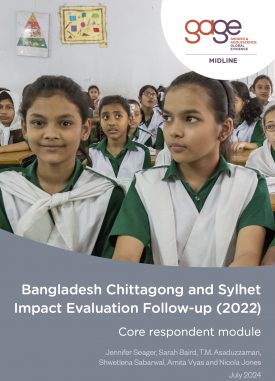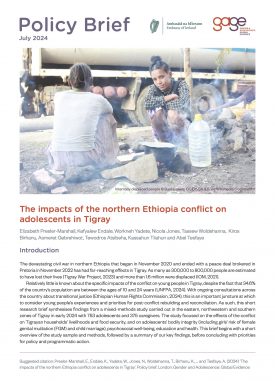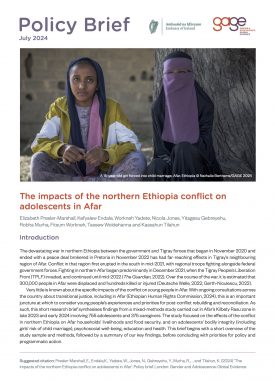Since August 2017, more than 700,000 Rohingya crossed the border into Bangladesh, joining another half million that made similar journeys in previous years to escape decades of systematic discrimination and human rights violations in Myanmar. The nearly three-quarters of a million refugees who arrived in the autumn of 2017 – over half of whom were children under the age of 18 – have predominantly settled into 32 camps located in two flood-prone sub-districts of Cox’s Bazar, which is situated in Chittagong Division along Bangladesh’s border with Myanmar. These two sub-districts (Ukhia and Teknaf) now have populations that are 76% and 29% refugees respectively.
In Cox’s Bazar, GAGE partnered with researchers from Yale University and the World Bank to implement the Cox’s Bazar Panel Survey (CBPS) in order to provide accurate data to humanitarian and government stakeholders involved in the response to the influx of refugees. Following the GAGE conceptual framework, we present brief headline findings across six core capability domains: education and learning, health and nutrition, bodily integrity and freedom from age- and gender-based violence, psychosocial well-being, voice and agency, and economic empowerment and social protection. Future rounds of data collection will explore the experiences of adolescents in refugee and host communities over time.
Suggested citation
Guglielmi, S., Muz, J., Mitu, K., Ala Uddin, M., Jones, N., Baird, S. and Presler-Marshall, E. (2019) ‘The lives they lead: exploring the capabilities of Bangladeshi and Rohingya adolescents in Cox’s Bazar, Bangladesh’. Policy Brief. London: Gender and Adolescence: Global Evidence. (https://www.gage.odi.org/publication/the-lives-they-lead-exploring-the-capabilities-of-bangladeshi-and-rohingya-adolescents-in-coxs-bazar-bangladesh/)


